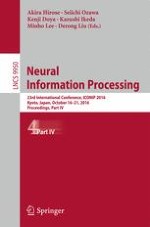2016 | OriginalPaper | Buchkapitel
Doubting What to Eat: A Computational Model for Food Choice Using Different Valuing Perspectives
verfasst von : Altaf H. Abro, Jan Treur
Erschienen in: Neural Information Processing
Aktivieren Sie unsere intelligente Suche, um passende Fachinhalte oder Patente zu finden.
Wählen Sie Textabschnitte aus um mit Künstlicher Intelligenz passenden Patente zu finden. powered by
Markieren Sie Textabschnitte, um KI-gestützt weitere passende Inhalte zu finden. powered by
